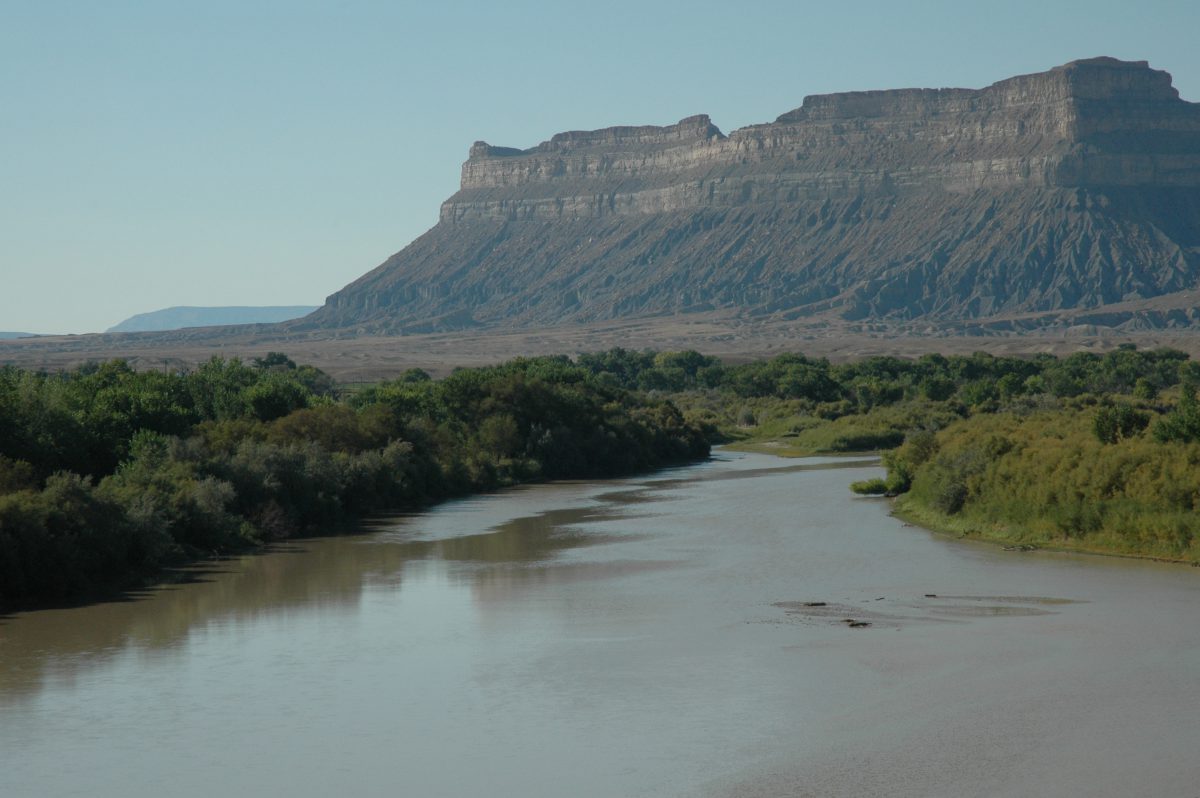Michael D. Kane is coauthor (with Nathan N. Waite) of “Avoiding Mormons, Running Rapids, Encountering Western Utes: William Lewis Manly’s Voyage Down the Green River and Across Utah in 1849,” Utah Historical Quarterly 89 (Summer 2021)
How did you come into contact with the story of William Manly as a subject of interest, and what prompted you to write about him and his travels in Utah?
River running on the rivers of the US West has always been a passion of mine. After receiving my University of Utah undergraduate degree in Leisure Studies in 1976, I began to run rivers with young men and women who needed outdoor experiences to help bring order into their lives. I started a river running company called Lone Eagle in Jackson Hole, Wyoming. Over the 18 years of ownership of Lone Eagle Whitewater, we ran over 200,000 thousand customers down the Snake River—among them, President Bill Clinton and his family. Selling Lone Eagle in 2000, I returned to the University of Utah to work on and complete my doctorate degree in the College of Health, Parks, Recreation & Tourism. I first heard about William Lewis Manly while working on my degree and spending long hours in the university library looking for the histories of early river runners. After reading his book, Death Valley in 49, I began to see discrepancies between his documented accounts on the Green River and what authors and historians had reported on Manly’s river travels. To help document my dissertation, which looked at Manly’s river travels, I assembled a river running team in 2006 and traced the route that I believed William Manly had traveled in 1849.
What were—and remain—the major challenges of determining just how far and where Manly and his companions traveled?
Undertaking my doctoral dissertation on William Lewis Manly took unexpected turns. In Death Valley in 49 and the Jayhawkers Oath, Manly details from memory his travels on the western lands of a newly forming country. Some parts of these books detailed and are specific to the locations and distances that Manly traveled. However, there was also a lack of information due to the fact that Manly did not remember or document many of these details. This ambiguity opened the door for authors and historians to speculate on Manly’s travels. I was determined to base my conclusions on hard evidence gathered through research. This required both detailed research in the literature as well as at the sites where Manly visited. I also personally contacted some of the authors and historians who had written about Manly. Manly himself commented on the challenge to authenticate his travels on the Green River: “Those who traveled over the same or similar routes are capable of passing a just opinion of the story.” The process of reviewing and verifying the details of the story took over ten years to complete.
The challenge remains to share and have accepted my research with historians and individuals familiar with the Manly story. To help with this process, I have reached out to various organizations and venues to share my findings.
Tell readers about Manly’s own account Published as Death Valley in ’49 (1894)—it’s style and content—and the challenges of relying on this source in your own research? Also, how unique is Death Valley in ’49 among other nineteenth-century first-person reminiscent accounts of overland migration and travel?
I find William Lewis Manly’s personal writings to be informative and unique. After arriving in California in 1849 Manly wrote about his travels, but these writings were subsequently lost to a fire. Forty-five years later he was convinced by close friends and family to him to rewrite an account of his experiences. Manly’s approach was to describe in detail people who he encountered—both immigrant travelers, military personal, Native Americans—and the lands he encountered. Another aspect of Manly’s writing style was his personal reflection. A wonderful example is: “Looking back over more than 40 years, I was then a great lover of liberty, as well as health and happiness, and I possessed a great desire to see a new country never yet trod by civilized man…” (Death Valley in 49, p. 496)
What do you think the individual stories of Manly, McMahon, and the men involved reveal about or are significant to the broader 49er experience?
The individual stories of Manly and McMahon and others bring a closeness to the reader of the personal experiences these men encountered. Reading about the challenges these men faced gives the reader a deep appreciation for what they encountered. Following in the footsteps of Manly and McMahon over 160 years later gave me and my traveling companions a deep appreciation of accomplishment. That is one aspect that I personally enjoyed: experiencing and traveling the same places that Manly had encountered. There were times floating down the Green River and walking overland that I felt a deep appreciation for what they all accomplished.

